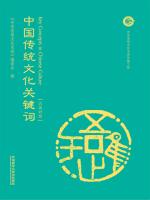《中国传统文化关键词》读后感
用户718926
After reading the article on traditional Chinese culture, I have a
deeper understanding of the profound history and rich heritage of this
ancient civilization. The article highlights some of the key aspects of
traditional Chinese culture, including Confucianism, Taoism, Buddhism,
traditional Chinese medicine, martial arts, and Chinese calligraphy.
Confucianism, founded by Confucius, emphasizes the importance of
morality, filial piety, and social harmony. Taoism, on the other hand,
is based on the idea of living in harmony with nature and the Tao (the
Way). Buddhism, which was introduced from India, teaches the principles
of compassion, mindfulness, and enlightenment. Traditional Chinese
medicine, which includes acupuncture, herbal remedies, and qi gong, is
another important aspect of Chinese culture. It is based on the idea of
balancing the flow of qi (energy) in the body to promote healing and
wellness. Martial arts, such as kung fu and tai chi, are also closely
associated with Chinese culture. They not only involve physical
techniques but also emphasize the development of inner strength and
discipline. Chinese calligraphy, with its unique brushstrokes and
characters, is a form of artistic expression that has been practiced for
thousands of years. It is considered a highly skilled art form and is
still valued today for its beauty and cultural significance. Overall,
traditional Chinese culture is rich and diverse, with many different
beliefs, practices, and art forms. It has had a significant impact on
the world and continues to be an important part of Chinese identity and
heritage. I enjoyed learning more about these aspects of Chinese culture
and appreciate the opportunity to gain a deeper understanding of this
fascinating topic.




 京公网安备 11010802032529号
京公网安备 11010802032529号